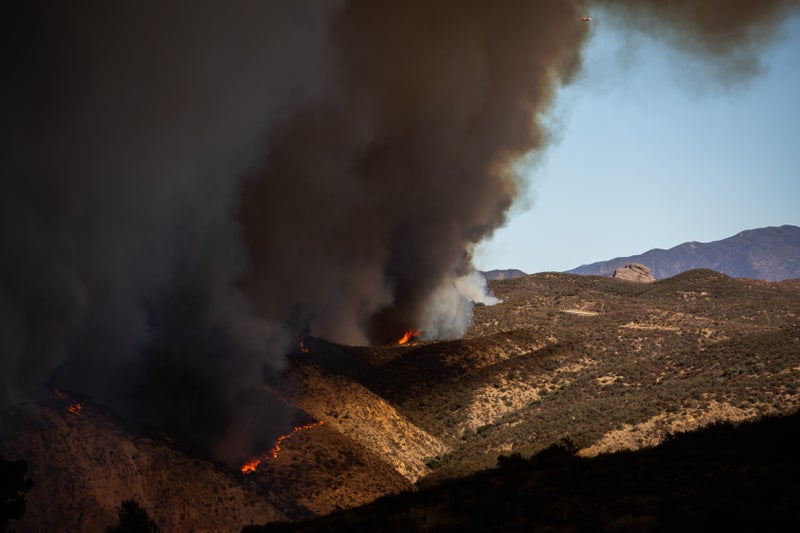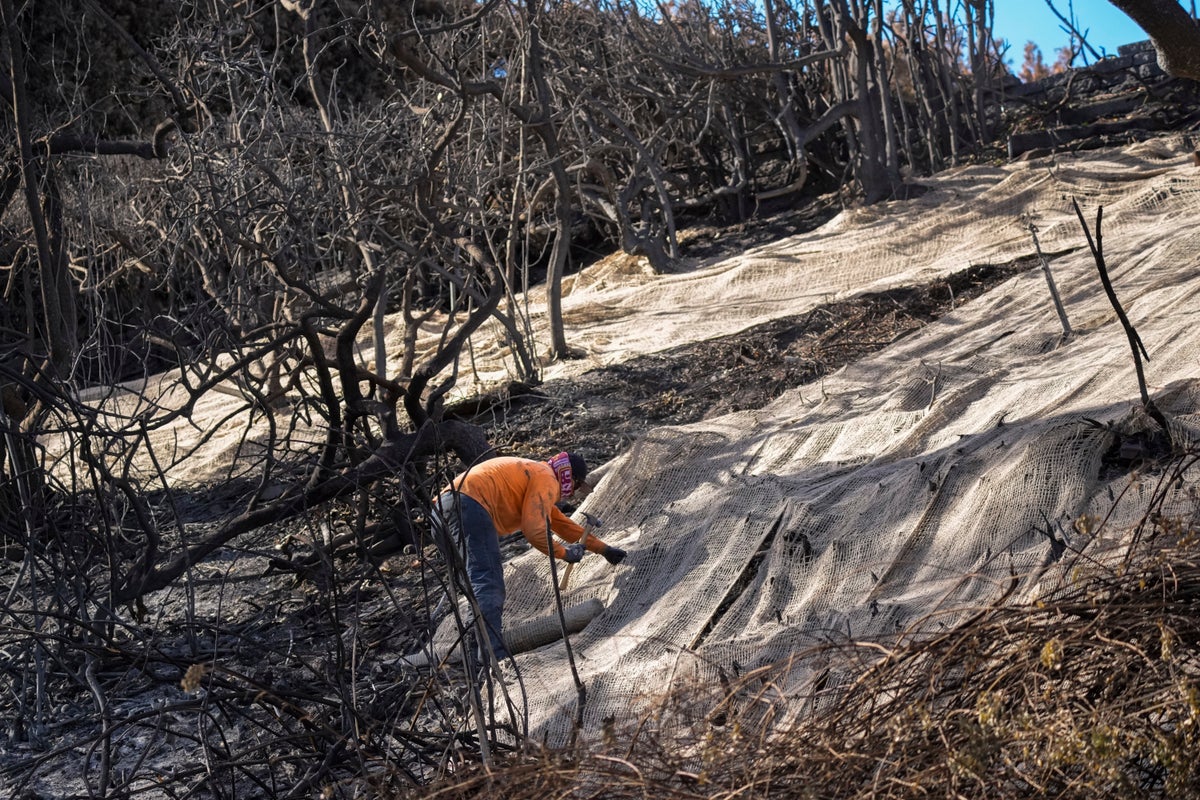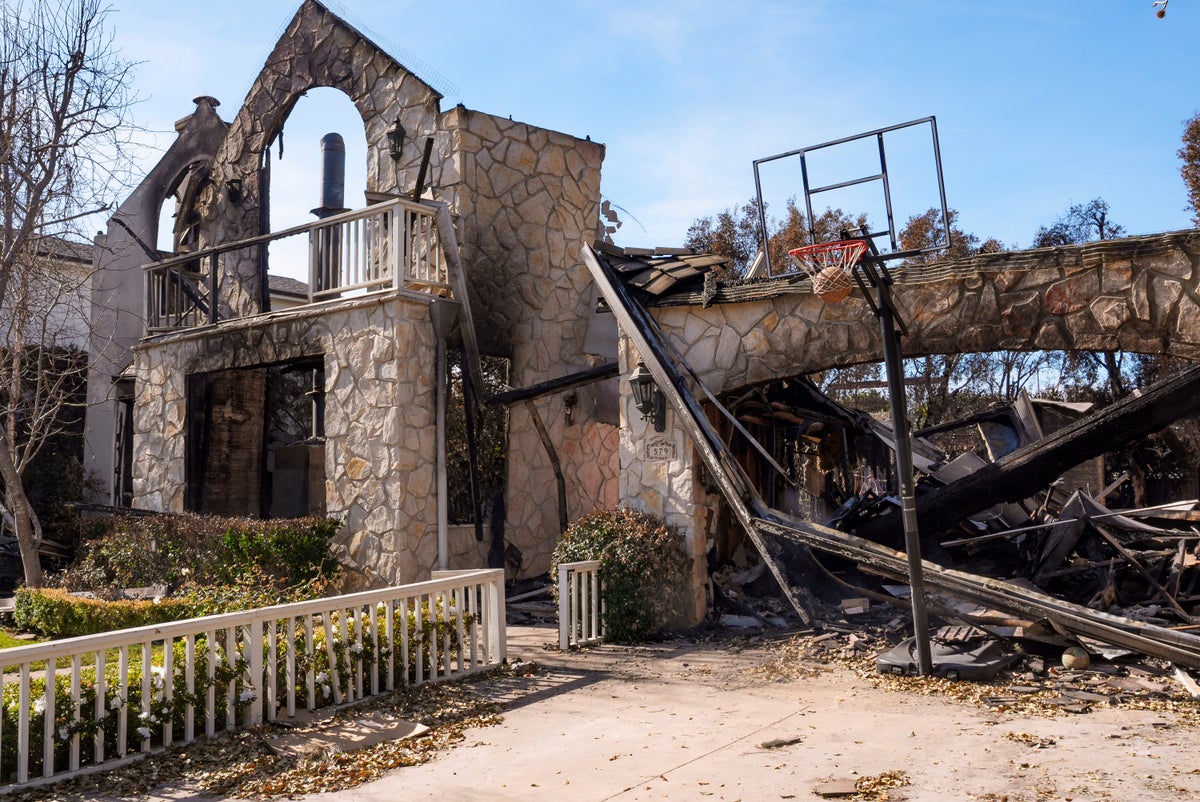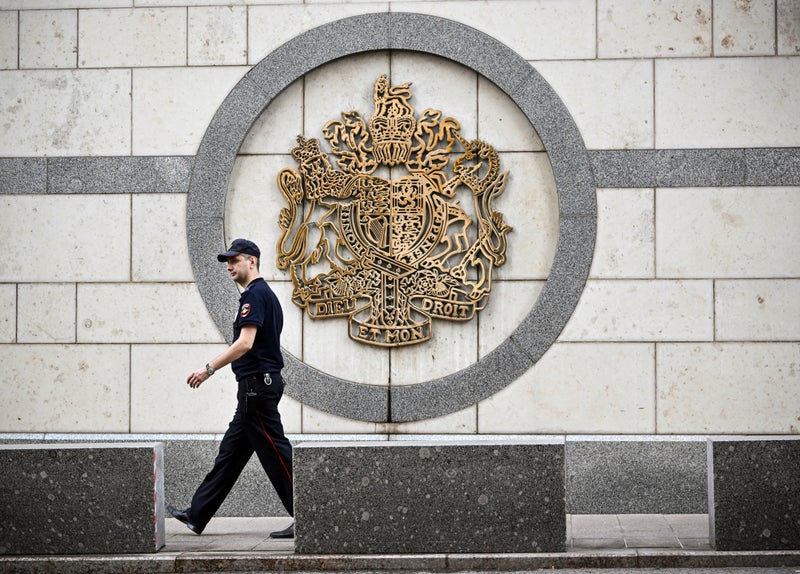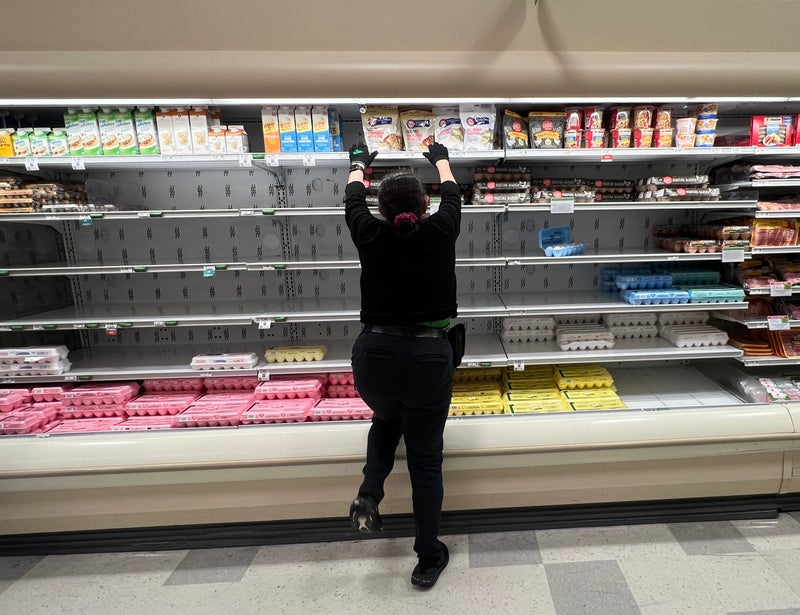Dangerous debris flows can strike at any time, carrying boulders and cars at speeds up to 35mph. The layer prevents rain from soaking into the ground, causing it to run off. Without vegetation to hold the soil, the runoff flows faster and gains power as it heads downhill, increasing the risk of flash flooding and fast-moving landslides of debris.
![[California Governor Gavin Newsom surveys damage from the Palisades Fire earlier this month in the Pacific Palisades neighborhood of Los Angeles, California. Newsom issued an executive order to expedite flood control measures before this weekend’s rain]](https://static.independent.co.uk/2025/01/12/19/6e2d79a0d8ab4561bf3c41506be24569.jpg)
Usually beginning on hills or mountains, debris flows can happen during downpours of just half an inch of rain an hour. They can carry boulders, trees, and cars, and travel for miles. After the Thomas fire struck in 2017, a debris flow in Montecito, California, killed 23 people and damaged or destroyed more than 400 homes.
By the time a debris flow is coming, it will be too late to safely escape. People should never cross a bridge if a flow is approaching or cross a road with flowing water or mud. Before a debris flow, people should monitor the weather, stay awake during storms that could cause landslides, and watch environmental cues. Fluctuating water levels, for instance, can indicate debris is blocking water and then releasing upstream.
Some residents were stocking up on sandbags early Friday morning. Several voiced concerns about what could happen. “Even now that the fires are out, looming threats of mud and debris flows are a significant threat to the safety of our communities,” said Los Angeles County Board Chair Kathryn Barger. “It’s imperative that this preventative work begin immediately.”.
“The fire scientists are telling us that wildfires are increasing in size and severity,” Dr. Jason Kean, a research hydrologist with the United States Geological Survey, told The Times. “From that fact alone, you’re exposing more terrain and making more terrain vulnerable to post-fire problems.”.

